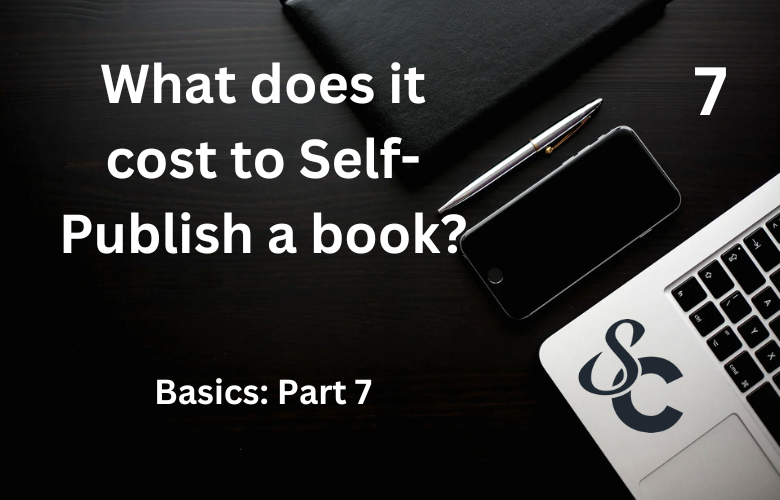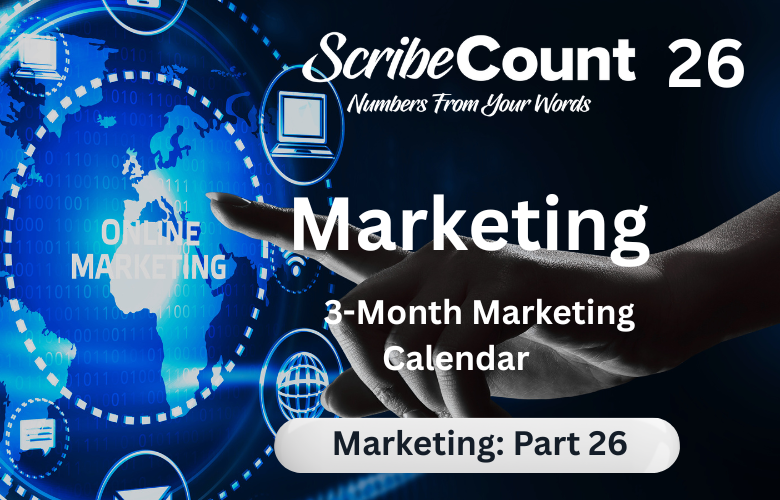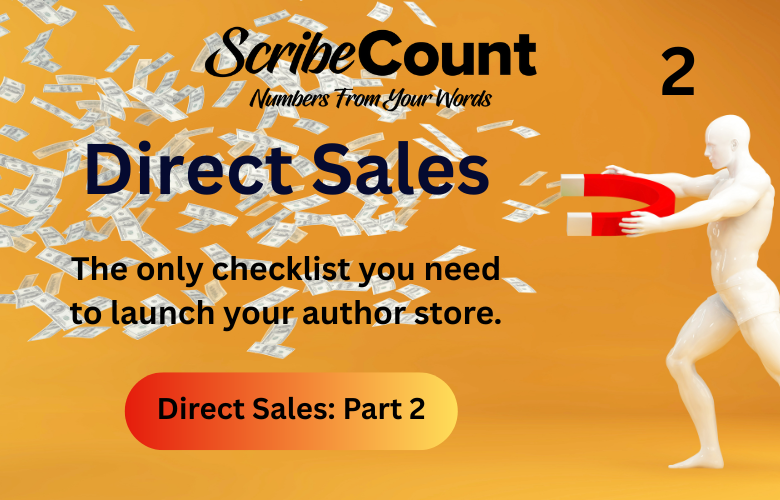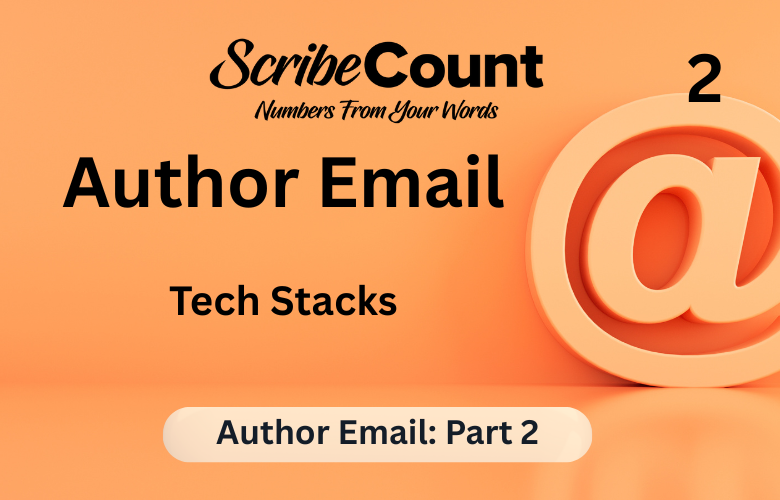What does it cost to self-publish a book? (in 2025)
The average cost to self-publish and market a fiction novel is currently (2024) about $2,000-$4,000. That number includes production costs such as formatting, editing, and cover art, plus a modest marketing budget. Of course, you can spend much more than that, but it's challenging to spend less, produce a quality book, and let the world know about it.
Did those numbers shock you? Don’t let them. A lot of variables go into those figures. Here in this post, we’ll do our best to explain each portion of those costs and outline the ways you might get them done cheaper.
Variables.
Book lengths vary by genre, so the costs attached to them do as well. Editing a 300,000-word epic fantasy novel will obviously cost more than an eighty-thousand-word romance novel. Some books require extensive fact-checking. Some have maps and illustrations that need to be created. If it's non-fiction you are writing the book will need to be indexed. There are ISBN’s to purchase and assign. How many formats do you plan to publish in? What’s your marketing plan? What kind of cover are you envisioning?
All these questions and more will have an impact on the
production cost of your book.
For the sake of simplicity, we’ll use a thriller of 100,000 words in our example here.
The Basics
The suggested bare minimum you’ll need to do to get your book from its raw manuscript form to a file that’s ready to be uploaded to the various sales platforms is as follows:
1. Self-Edit FREE
2. Beta Reader input FREE
3. Copy Edit High Cost
4. Cover Design Medium Cost
5. ISBN Purchase Low Cost
6. Copyright Registration Low Cost
7. Proofreader Low Cost
8. Formatting Low Cost
9. Publishing FREE
10. Marketing High Cost
We’ll talk through each step here.
Editing
There are three types of editing. Whether or not you need all three depends on the type of book you are writing. We’ll cover all three here and then explain why a Copy Edit is a must.
Developmental Editing
Developmental editors help writers with the overall structure of the story. They ensure the plot makes sense and that the story flows smoothly. They critique things such as character development, dialogue, sentence structure, tone and style, pacing, setting, and whether the story is written for the target audience. They may be employed during the writing process on a chapter-by-chapter basis, or only get involved once the first draft is finished. Most self-published authors utilize beta readers to perform this role but professional developmental editors are available to them through several sources.
Costs for Developmental Editing range by genre.
· Fiction: 3¢–4¢ per word
· Non-fiction: 4¢–5¢ per word
· Academic: 4¢–6¢ per word
· Business: 4¢–6¢ per word
For our sample thriller, a developmental editor would cost $3,000-$4,000.
Due to the high costs most self-publishing authors forgo the professional developmental editor and instead do several self-edits before gathering input from a few beta readers. A good beta reader is one that provides the author with honest and constructive criticism and they are one of the author's most valuable assets. We talk more about beta readers, what makes a good one, and how to find them, in another post.
Copy Editing
Copy editing is the process of revising written material to improve quality and readability, as well as ensuring that a text is free of errors in basic grammar, style, and accuracy. Most copy editors follow The Chicago Manual of Style and approach the manuscript not to address its overall story or structure but rather to make mechanical corrections at the sentence level. They look for things such as clarity, grammar and usage, accuracy, consistency, and the overall readability of the text. They also look for consistency in style, tone, and voice. A copy edit is a required part of any self-published work.
Copy editing rates are usually between $0.02 and $0.04 per word. Slightly more for non-fiction.
A good copy edit for our sample thriller novel would cost around $3,000.
This will likely be the highest cost related to the production of your book. However, we highly recommend you do so. Copy editors prevent Joe in chapter three from becoming John in chapter nine. They prevent a scene from taking place on Saturday only for it to become Friday the next day. Jane was blond in chapter one, but now she’s a redhead? Jack dropped his gun in that alley two scenes ago, but now he’s pointing it at the bad guy? You get the point.
Every plot hole, misnamed character, location mistake, time travel, or misplaced word, pulls the reader out of the story. This often results in them abandoning the book, or worse yet, leaving a bad review. Editing is a necessary part of writing, skipping it is a fool's errand.
That said, we understand that many new authors cannot afford an editor. What's the next best thing?
Editing software
Running your manuscript through some editing software will catch the majority of issues related to grammar and spelling. However, it does not (yet) do very well with the tone or style of your writing. Many authors report that the software blunts their voice; their unique way of placing words and showcasing their expression. As a result, many authors utilize it for proofreading only.
The two best software options on the market today are ProWritingAid and Grammarly.
Beta Readers
Authors are often told they are “too close to their book”. To combat this they will set the book aside for a month before returning to edit it. Or they use fresh eyes. These fresh eyes come in the form of beta readers. These are friends who read the genre they write and will not hold back when it comes to telling the author where the story needs work. Good beta readers are worth their weight in gold and authors should always have a few of them standing by for the next manuscript. Beta readers are usually free, but it's considered good form to gift them a copy of the book once it has been published.
Some tricks of the trade.
Authors on a budget have developed a few tricks to aid them in the self-editing process. One trick is to read and edit the book backwards one paragraph at a time. This keeps the author from getting pulled into the story and making changes to it when they are supposed to be examining it at the sentence level.
Another trick is to have software read the story out loud to them. This will often highlight double words, overused adverbs, and odd phrasing that failed to register when they were using their eyeballs. Most writing software has a “read” option, but if not you can copy and paste it into WORD which does.
Plugging the story into an AI tool can also highlight mistakes that the author skipped over. It takes some self-discipline to use such programs for editing purposes only, but it can be done.
We could go on for pages about editing and how it's best accomplished, but this post is about the cost of self-publishing a book, so we’ll discuss editing in depth elsewhere.
Knowing when to stop
Editing can take on a life of its own. After all, it's your baby, and you want it to be perfect. So one more editing pass is good, right? How about two? Five?
ALL authors need to recognize that no story is absolutely perfect. There’s always another plot point they could tweak, another sentence to polish up a bit. The author who is self-editing should ask themselves if the edits they are making are resulting in significant improvements or just irrelevant changes. A popular saying in the author community is “Done is better than perfect”. Beware the editing monster, don’t let it keep your story away from the readers you wrote it for.
Cover Design
“Don’t judge a book by its cover”
We’ve all heard this multiple times, and while I understand the message behind it, when it comes to actual books, it's bullshit.
Your book's cover is the first thing the potential reader sees. It's literally wrapped around your story. They have to go through it to get to the good stuff inside. There is no avoiding it.
YOU WANT THE READER TO JUDGE YOUR BOOK BY ITS COVER.
Thus, having the best cover possible is important to attracting the reader you want. The cover you choose is their first impression, and we all know the saying that goes with that.
Covers do more than just attract attention. They also convey the genre and tone of the story within. They speak to your brand. They offer a prequel to the story. They establish trust and credibility. All of which drives sales and aids in discoverability.
We talk in-depth about book covers and how they speak to the potential reader in another post, but for now, let's focus on the costs of obtaining a good one.
When it comes to covers you often get what you pay for. But that doesn’t mean you can’t get a good cover without spending a lot of money. You’ll need to understand that you are limited by budget and expect to get a version of what you may have been envisioning instead of a custom masterpiece.
A simple pre-made cover, one that originated as a photo and then underwent some manipulation, can range from $100 to $200. A fully illustrated cover from an established graphic artist can run as high as $2,000. Most authors end up somewhere in the middle, especially when starting out.
When choosing a cover it helps to remember branding. Is this the first book in a planned series? If so you would need to keep the same layout and font throughout the series. Is the artist you are working with willing to do so? You’ll need to budget for the entire series, not just one book. Will they offer a package deal?
There are many services out there that offer premade covers to choose from. The author finds one they like and then the service adds the title and author's name to it. There are usually package options that cover the various formats.
Selfpub bookcovers is one such service. They offer over 13,000 pre-made covers and the ability to search them by genre or keyword. Prices range from $79 to $120.
If you need something more customized there is Miblart. They offer covers in every genre and provide a large portfolio to choose from including pre-made’s. Their services also include Box Sets, Logo design, Audio covers, Merch design, and Custom Typography. If you have a little extra in the budget Miblart may be right for you. Prices range from $220 for a basic cover to $315 which includes multiple formats, marketing images, and 3D covers.
For a fully customized cover produced by an experienced
graphic artist, it's hard to beat Damonza.
Packages run from $175 for a front cover to $1,645 for a premium package. If
money is no object check out Damonza.
There’s a lot that goes into a good book cover. It's best to do some reading on the subject and know what you should include to give your book the best first impression it can. You’ll also know how to best convey your ideas to the artist you end up with. Keep in mind that an experienced cover artist will often know what’s right for your book better than you will. Be sure to listen as much as you speak.
ISBN Purchase $2.75 per format
An ISBN, or International Standard Book Number, is a unique number that identifies books and other book-like products. It is found above the bar code on the back of each book. Bookstores, wholesalers, libraries, and distributors all use ISBNs to order, stock, and sell books. Some sales platforms do not require an ISBN for eBooks, but all print books are required to have one.
You’ll need to purchase one for every format you intend to publish your book in. In the United States ISBN’s are sold by Bowker and the price can range from $125 to $1.50 depending on how many you purchase. Most Authors on a budget opt for the $275 package which provides them with 100 ISBN’s. Enough for ten to twelve books.
We go in-depth about ISBN’s, why they are needed, and how best to purchase them, in another post.
Copyright Registration $35
Registering the Copyright for your book is the number one thing an author can do to safeguard their work. The process is done through the Copyright office and takes about thirty minutes to complete. The cost is $35 per book.
We talk more about copyright, what it is, how to file for it, and how to defend it, in other posts.
Proofreader $200
A proofreader is a professional who carefully examines your manuscript at the sentence level to identify and correct errors in grammar, spelling, and punctuation. This ensures that the final draft is error-free before it is passed on for formatting. Once the proofreading has been finalized the manuscript is considered finished and ready for publication.
Formatting $150
Formatting refers to the task of converting the author's manuscript into an electronic file that is ready for publication in several different ways. A Formatter will set the text layout, including font styles, margins, page numbers, headings, and spacing, to ensure consistency and optimal readability. A book's format must be tailored to the specific requirements of the publisher or sales platform the author wishes to sell at. Most professional formatters offer packages that will provide the author with a file each in eBook, paperback, large print paperback, and hardcover. Some files may be duplicates with different backmatter tailored to a specific sales platform.
We talk more about formatting, what’s involved in doing so, the software available, and whether or not you might wish to do this yourself, in other posts.
Publishing FREE
Publishing is the act of placing your book up for sale on various online platforms. Most have a simple upload system in place that walks you through the process. Almost all eBook sales platforms are free, the platform makes money off of each sale of your book (~30%). Some of the print distributors have fees involved. The cost is negligible and varies widely.
***
As of January 2025 there are over 57 sales platforms available to self-published authors.
(Not including libraries or bookstores)
***
You may choose to use an aggregator to publish your books. Aggregators are services that will upload and maintain your books across several platforms. They handle price changes, glitches in the process, collect and consolidate royalties, and even offer internal marketing options.
While this can save the author a lot of time and eliminate the learning curve that comes with each platform, they take an additional 15% of each sale made on those platforms. Most indie authors publish directly with the major platforms and then utilize an aggregator to reach the many smaller options.
There are many pros and cons to using an aggregator. We discuss them in another post.
Marketing $700
No one will buy your book unless they know about it. Marketing is essential to reaching readers and building an audience. Every book should have a marketing plan to go with it. The size and shape of that marketing plan depends greatly on your budget. Fortunately, for the new author, there are free options.
Free Advertising
Many platforms offer marketing services that are free to the author. Examples would be Amazon’s FREE days which allow authors to list their books for free for a limited time to build some buzz and get a few reviews. Amazon also offers a Countdown option that allows the author to discount their book for a limited time. There are hundreds of options for promoting a book that cost nothing to the author.
Paid Advertising
Consider paid newsletters
A paid newsletter promotion refers to using a company or platform to advertise your book via email to a curated list of readers. The email would go out to readers who have signed up for the newsletter to see discounted books in the genres they like to read. This works well for authors who have not yet built an audience for their books or have yet to construct an email list of their own. Prices range from $25 up to several thousand. The cost is directly proportional to the number of subscribers that the newsletter has. Written Word Media and Bookbub are two of the best services out there for indie authors.
Consider Newsletter swaps
A Newsletter Swap is a form of cross-promotion used by authors who have cultivated a healthy reader list. Two or more authors, writing in the same genre, agree to send out emails to their respective subscriber lists. In the email, the author promotes the other's books in their newsletters in the hopes of reaching a new audience by leveraging each other's lists.
There are services that help connect authors seeking the do newsletter swaps. BookFunnel and StoryOrigin offer many options for both finding authors and executing the swap itself.
Consider Platform advertising options
Many sales platforms offer in-house advertising options to their authors. Kobo, for example, offers a variety of advertising options for authors to promote their books, including Daily Deals, the FREE page, Buy-More-Save-More, and various Holiday and Special day sales. They also offer promo codes that authors can use in their own advertising.
Authors can access the Promotions tool in their Kobo Writing Life dashboard to see available promotions and select books to apply to. There are two ways to pay for participation in a promotion: a flat fee or a percentage of the author's royalties.
Amazon has an internal Advertising Service to help authors gain traction on their platform. Budgets can run from $1/day up to $1,000. However, there is a steep learning curve and it requires constant attention to maintain. Bryan Cohen offers a great course on Amazon Advertising.
Consider Social Media ads
FaceBook ads can be run for as little as $5 a day. However, the learning curve is steep and the platform is constantly changing. It's advised that before any author ventures into FaceBook marketing they first spend some time to thoroughly learn and understand the platform. This applies to all forms of social media marketing. While the potential is huge and the audience large, the amount of money and time spent finding, filtering, and then reaching that audience can be outside the budget of most aspiring authors.
To learn FaceBook ads for authors we recommend David Gaughran and Nick Thacker, who both simplify the complexities of the platform very well.
There are other ways besides ads to leverage social media. It's highly suggested that you make an Author Facebook page. This can be done for both you the author and for each of your books. Cross-post content to Instagram, TikTok, and Pinterest. Utilize Hashtags. Start a YouTube channel and post short videos about you and your books. Invite guests to post on your page and mention your books. Join author and reader groups to both talk shop and (humbly!) mention what you are currently writing. Ask and answer questions in the groups and build your brand within them. The possibilities are endless.
We talk more about Facebook ads and other Social Media platforms in another post.
Consider a BookBub Feature Deal
A BookBub feature deal is considered the Holy Grail of Indie Book Marketing. BookBub is a paid email newsletter service that separates itself from the others out there due to the sheer size of its mailing list. An advert run to their Crime Fiction mailing list can reach over 2.5 million readers alone. Many authors credit BookBub with starting their careers.
However, it's not easy to get this promotion. Authors must first apply for a space and then have their book pass an internal vetting process before being accepted. The cost is another hurdle that many aspiring authors find it out of reach. A Crime Fiction promotion for a book priced at $2.99 will run $2,813.
Despite the cost and the application process, most authors consider a BookBub promotion a no-brainer. Most promotions not only pay for themselves many times over but also result in multiple reviews and even best-seller status in their respective genre. If you have the funds for a BookBub promotion it is highly recommended.
We talk more about BookBub and how to apply/get accepted in another post.
Other Costs
There are other costs related to being a self-published author such as headshots, business cards, email services, website domain fees, etc. We left those out of this post to focus only on the costs necessary to publish and market a completed book. We’ll explore every aspect of indie publishing, including the costs, in another post.
So what was the total cost of publishing our thriller? Let's take a look.
1. Self-Edit FREE
2. Beta Reader input FREE
3. Copy Edit $3,000
4. Cover Design $500
5. ISBN Purchase $2.75
6. Copyright Registration $35
7. Proofreader $200
8. Formatting $150
9. Publishing FREE
10. Marketing $600
Total: $4,487.75
Our sample thriller came out on the high end of what the average self-published book cost to publish. This was mostly due to its size and genre. This is a medium budget for a thriller this size and is in no way set in stone. Costs are always determined by the best deal that accomplishes the needed task for the author while staying within the author's budget. You may negotiate rates with any of the providers you hire or even decide to learn to do things yourself. First-time authors will often spend less and try several editors, cover artists, or proofreaders, before finding the people who click with them and their writing. Once that happens, multi-book rates can then be negotiated.
The key takeaway from this post is to understand the required skills and actions needed to self-publish a book, know which of those skills you possess and which ones you will need to hire professionals to complete, the cost associated with each, and what not to skimp on. With that knowledge in hand and a structured plan in place, you will get your final draft into the hands of the readers with no surprises along the way.
Cost Calculator
Do you need to explore different prices for the various items on this list? ScribeCount offers a Cost Calculator in the TOOLS section of the dashboard. There you will find options relating to Production Costs, Overhead, Tools and Services, and Marketing, all in one place to provide you with an overall cost projection related to your book. Yes, there’s even a shiny chart.
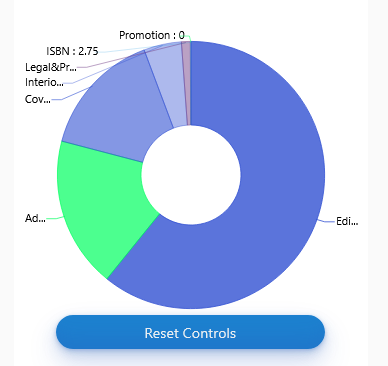
That all said, every book is different as every author is different, you'll need to find what works best for your book, its genre, and your budget.
